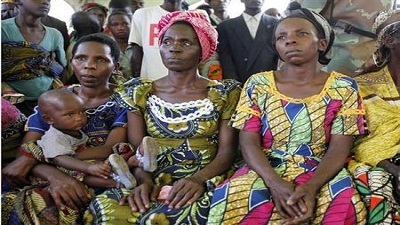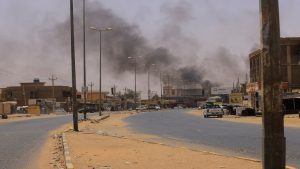There were over 31 million new cases of internal displacement caused by conflict, violence or disaster in 2016 and the Democratic Republic of Congo (DRC) ranks as the top country for displacement caused by conflict.
These are among the findings of the Global Report on Internal Displacement launched in New York a research document produced by the Internal Displacement Monitoring Centre of the Norwegian Refugee Council.
While conflict remains a huge driver, the vast majority of new displacements are associated with disasters, often related to extreme weather.
While refugees fleeing across borders attract greater attention, it’s the internal displacement of millions annually that’s often at the root of the problem.
Conflict related displacement sees the DRC with 922 000 internally displaced ahead of Syria, Iraq, Afghanistan and Nigeria.
Secretary General of the Norwegian Refugee Council Jan Egeland says, “The DRC was number one and it’s a shame really we’re back really to having the Congo as the centre, the epicentre of conflict displacement.”
“We were supposed to end that a decade ago, I was under-Secretary General for humanitarian affairs, yes 12-15 years ago, I was frequently in the Congo, we were optimistic that this massive investment in peace making, in democracy-making , in humanitarian relief and in development efforts would lead to us coming on the right path for Congo. Now it is unravelling really in the Congo,” says Egeland.
Figures from the first five months of this year already sees over one million people displaced in the DRC’s Kasai Province alone while globally disaster related displacement is three times higher than conflict related movements as Alexandra Bilak of the Internal Displacement Monitoring Centre explains.
Bilak says a significant number of people were also displaced in 2016 by weather related natural hazards and disasters.
“As in previous years, disasters bring about the largest numbers of new internal displacements every year. In 2016 it was three times more than conflict, 24.2 million. Now as I’ve said the majority of all new disaster related displacements are driven by weather related hazards like storms, typhoons, floods, wild fires and severe winter conditions. China, the Philippines and India were the three countries that were worst affected as they are every single year.”
Meanwhile, in some regions, it’s becoming increasingly difficult to distinguish between disasters and conflicts as the immediate cause of displacement.
Bilak says, “That’s typically the case in some of the countries in the Horn of Africa where this toxic mix of drought and conflict combines to push people away from their homes. We don’t have definitive figures for these types of phenomena but we know for example in Somalia and Ethiopia we’re already looking at a approximately 250 000 people displaced by drought alone but where it’s difficult for them to determine whether it was ultimately food insecurity and pressure on their livelihoods, or whether it was conflict and violence and threats to their physical safety and security.”
Jan Egeland also raised concern that countries were being allowed to backslide after years of progress as in the case of the DRC.
“I think basically it fell off the top of the agenda and that was a major mistake, Congo could now be back where it was 15 years ago when it was on the top of the agenda for a very few years. I hope the same will not happen with the Middle East, just because the number of internal displacement in Syria and Iraq is down; it’s down from where it was. The job is not even half done there as it wasn’t in the Congo.”
The report warns that displacement will continue to have major impacts if the drivers of conflict, poverty, environmental change and state fragility are not addressed.
While using the DRC as an example that when fragile states begin to drop off the top of the international agenda, the world faces the risk of having them re-emerge a few years later with significant numbers of new displacements with far-reaching humanitarian, political and security consequences.
– By Sherwin Bryce-Pease






